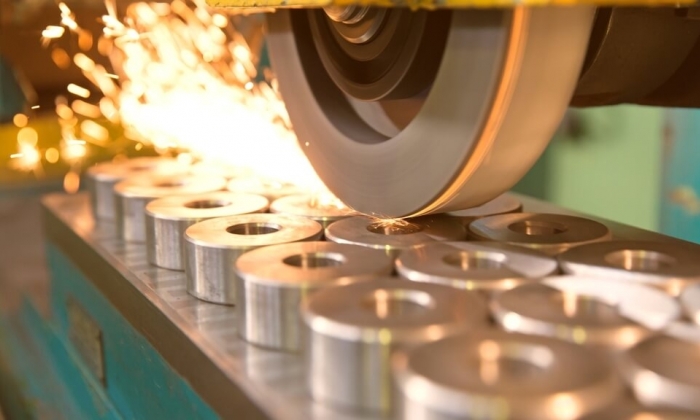Polishing with a sense of touch


Polishing and smoothing workpieces, usually at the end of a series of industrial processing steps, is a thoroughly essential component of value creation in any industry. This process makes a fundamental contribution to the visual appearance of an end product – and as a result, no small contribution to its market success.
Whether it’s a marble table, a wristwatch, or a smartphone, only removing any irregularities from the surface and refining it can give a product a high quality appearance.
However, achieving the desired polished surface is not so easy. This is because every material and every surface reacts differently to forces exerted during the refinement process, and therefore places different demands on the polishing or smoothing process. It therefore requires fine sensitivity and responsiveness.Traditionally, these have tended to be more the core attributes of the human hand rather than those of conventional models of industrial robot, so surface refinement is frequently still done manually. It is therefore a rather cost-intensive line item for most companies in the productive industry.
But polishing is anything but a popular task among the labor force – it’s “dirty work”. This work step frequently releases a lot of dust, to which the worker is then exposed. This is not simply unpleasant, but can be highly hazardous to health without the correct protective measures. And, of course, these protective measures themselves represent another significant cost factor for the company.
The workers employed for this monotonous, repetitive, and sometimes hazardous task, often highly qualified people, can therefore certainly be used more cost-effectively and practically in more demanding activities.
Sensitive lightweight robots for automated polishing
What may seem to be a typical dilemma for the modern day actually turns out to be surprisingly difficult to solve. Haptic force/torque sensors extend the sense of touch needed for such processes to lightweight robots, bringing them closer to the capabilities of the human hand. With these sensor extensions, the robot arms can detect the slightest force exerted and resistance encountered, and react accordingly in real time. The polishing process can therefore be completely automated and therefore made more uniform. One provider of such sensors is the Hungarian company OptoForce. Thanks to their IP54 certification, the OptoForce HEX-E and HEX-H sensors have no problem with the dust raised during polishing. These particularly sensitive models also come with a valuable bonus: OptoForce delivers not only the sensor hardware itself, compatible with robots by Universal Robots, KUKA, and ABB, but also an extensive software package. The package contains a number of preprogrammed standard industrial applications, including applications for polishing and grinding. That means that the time required for integrating the system is reduced to a minimum. In just 15 minutes, your automation solution is ready to operate.
With these new automation capabilities and their intuitive, clearly designed implementation, in our experience companies can anticipate added value of up to 100,000 Euro per robotic system per year.
Successfully in use around the world
This concept isn’t theoretical or a vision of the distant future, but is actually in use right now in a number of companies around the world. These companies face high global competitive pressure, rising wages, physically tiring and monotonous work, and increasingly strict quality requirements on the customer side. By implementing industrial robots equipped with a sense of touch, they are taking the right step towards the future.
And thanks to the short, simple integration process, they will stay economical for the present.

|
So erweitern Sie Ihr Geschäft mit kollaborativen Anwendungen
Mit dem Aufkommen intelligenterer, anpassungsfähigeren Werkzeuge können Roboter nun mit höherer Geschwindigkeit, Stärke, Sicherheit und Präzision arbeiten und bei Maximierung des ROI eine Vielzahl an Aufgaben erledigen. Erfahren Sie mehr darüber, wie Sie die Produktion bei geringeren Kosten beschleunigen können, indem Sie sich unser kostenloses eBook herunterladen.
KOSTENLOSES eBOOK ANFORDERN
|

|

